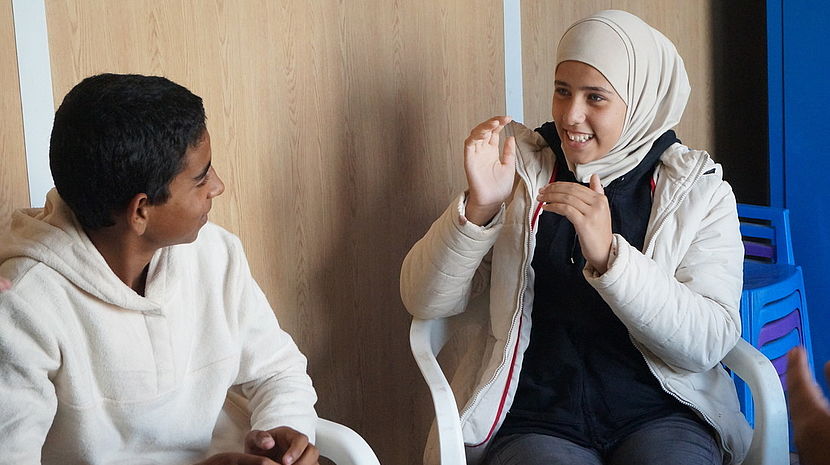Another step towards mental health for all

The compelling need to ensure that people with mental health needs receive care that is effective, affordable and respects their rights and dignity, spurred WHO to launch the Mental Health Gap Action Programme (mhGAP) in 2008. CBM has partnered with WHO since the start, and many local partners now use mhGAP in their work.
This article is written by Tarun Dua and Neerja Chowdhary, Department of Mental Health and Substance Abuse, The World Health Organisation.
The compelling need to ensure that people with mental health needs receive care that is effective, affordable and respects their rights and dignity, spurred WHO to launch the Mental Health Gap Action Programme (mhGAP) in 2008. As the number of mental health specialists in low- and middle-income countries is inadequate, the underlying principle of mhGAP is to strengthen delivery of mental health services through non specialists integrated in primary health care systems of these countries. This also reinforces the vital link between mental and physical health, and reduces stigma. CBM has partnered with WHO in this initiative since the start, and many local partners now use mhGAP in their work.
A range of tools were developed to assist countries to implement mhGAP, specifically, the mhGAP Intervention Guide (mhGAP-IG Version 1.0) and supporting materials. The Guide provided algorithm-based assessment and management guidelines in a user friendly format. It was translated in over 20 languages and has been used in 90 countries worldwide for integrated management of priority MNS disorders. A number of partners, including CBM, have been closely involved in the development of the Guide as well as in its adaptation, implementation and dissemination in the field.
In October 2016, WHO launched the second version of the mhGAP-IG to provide updated evidence- based information to countries to implement mental health services based on extensive feedback from experts using the guide as well as literature updates.
Using the mhGAP-Intervention Guide
The mhGAP-IG has found application by a range of stakeholders including ministries of health, academic institutions, NGOs and other philanthropic foundations and researchers to scale-up mental health services. For example:
- The Ministry of Health in Ethiopia included mhGAP-IG in the National Mental Health strategy and has used it to train more than 300 health workers to provide mental health care in around 158 health facilities.
- In Turkmenistan, as part of the National Non-Communicable Disease Scale up Plan, mental health professionals have been trained as trainers of general practitioners to provide basic mental health care using mhGAP-IG.
- mhGAP-IG has been used to scale up mental health response in emergency settings. For example, in Guinea, 320 primary health care workers were trained to provide mental health services to Ebola survivors and their families. Also, as part of the coordinated emergency response to Typhoon Haiyan in the Philippines involving CBM and other partners, 98% of rural health units had at least one staff trained in mhGAP-IG.
- In West Africa, with the support of CBM, French translation and local adaptation was carried out by mental health leaders from five Francophone countries. In addition, the mhGAP programme is supporting integration of mental health into health systems using mhGAP in five Anglophone countries.
- mhGAP-IG has been used to develop a distance learning course by the Pan American Health Organization. Supported by tutors, general practitioners and nurses it used different learning modalities: online sessions, forums, quizzes, and tasks completed for each condition over a five-month period. In three rounds, approximately 150 professionals participated from 14 Caribbean countries and 13 Latin American countries.
What is new in mhGAP-IG Version 2.0
Changes in Version 2.0 include updates in design as well as content. The content updates include revised management guidelines based on new evidence, addition of two new modules (Essential Care and Practice and Implementation module) and a follow up algorithm for every condition. The design changes include a vertical rather than horizontal algorithm for enhanced usability and a streamlined and simplified clinical assessment. Some modules which were presented separately in the earlier version, have now been combined to simplify clinical assessment and management. For example, mania and psychosis are now both addressed within the Psychoses module and alcohol and drug abuse are now both included within Disorders due to Substance Use.
The mhGAP-IG, by making mental health care available at scale, will contribute towards the goal of universal health coverage and other key goals in the Sustainable Development Agenda.
To download the guide, click here.